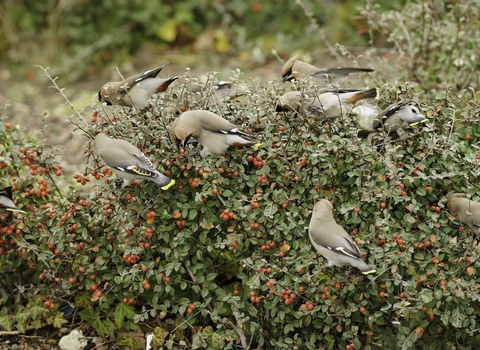
Waxwing feeding on cotoneaster berries in supermarket car park by Terry Whittaker/2020VISION
Cotoneaster
Cotoneaster was introduced to the UK in 1879 from Eastern Asia as an ornamental plant. It is now an invasive non-native species which is taking over valuable habitats including limestone grasslands.
Scientific name
Cotoneaster horizontalisWhen to see
May to SeptemberSpecies information
Category
Statistics
Statistics Height: up to 50cmInvasive non-native species
Habitats
About
Invasive cotoneaster was introduced to the UK from Eastern Asia in the 19th century as a garden plant. Since this time, it has smothered valuable landscapes including limestone grasslands and outcompeted many native species. Cotoneaster berries are easily dispersed by birds contributing to its widespread distribution. Many organisations, including Wildlife Trusts, are committed to the removal of this invasive plant in order to allow our native wildlife to thrive.Cotoneaster horizontalis is listed on Schedule 9 of the UK Wildlife & Countryside Act as an invasive species. This does not mean you cannot grow it in your garden but we encourage gardeners to think carefully about its potential impact on wildlife and to consider alternatives.
